AudioCulture
The noisy library of New Zealand music
Te pātaka korihi o ngā puoro o Aotearoa
Eddie Rayner
He has played keyboards on a Paul McCartney album, been musical director for the APRA Silver Scroll Awards, worked as a producer or studio musician for a long list of hit acts across Australasia, released multiple solo albums, and much more.
Despite his father being accomplished on the piano, young Anthony (Tony) Edward Charles Rayner only took a few months of lessons as a child. When he was 17 years old he resumed playing after he was expelled from high school for having long hair. Another friend, Steve Hughes, was expelled on the same day and suggested they form a band. They immediately went into the city so Rayner could buy himself an organ. He picked up music quickly, but their fledgling covers band struggled to find enough work gigging so he went through a range of menial jobs, from labouring on building sites to working in an abattoir.
From Prog to Glam
Rayner’s first originals band was the prog group Orb, which also included singer/guitarist Alastair Riddell, drummer Paul Crowther, lead guitarist Paul (Wally) Wilkinson, and bassist Peter Kershaw. Riddell had been playing music since he was 14 years and started his first group, Original Sun, at high school with Kershaw. Riddell’s remarkable drive had also seen him start his own blues newsletter and become co-organiser of the First National Blues Convention held at Moller’s Farm in 1968.
Orb were essentially a prog rock group and their shows saw them playing originals alongside cover versions of songs by Genesis, Yes and David Bowie. Rayner’s early influences as a keyboardist were the standout keyboardists of this era – Keith Emerson (Emerson, Lake & Palmer) and Rick Wakeman. One thing Orb had going for them was the electronics wizardry of drummer Paul Crowther.
“Paul (“Croth”) made a synthesiser for Orb,” recalls Rayner. “It had just a single oscillator and was made when the very first synths were emerging overseas. I don’t think they were available in New Zealand. There was possibly one band who had one, but I’m going to claim we had the first synth here in New Zealand – and it was built by Paul Crowther. To me, it was just a small keyboard attached to a wooden box with a panel that had Bakelite knobs on it – none of them being labelled – so I didn’t know what any of them did, or how it worked, but Paul was only too pleased to be the guy who operated it, even on stage. After every song, he’d scuttle over from his drum stool, roadie-style. He’d crouch underneath my keyboard, pressing the keys with his hand up [over the top] and twiddle the knobs to get the right sound. The audience would just wait. It was a wee bit embarrassing, but that was our procedure back then. That synth was used to great effect in a few songs, and it was my introduction to music synthesis and without Paul Crowther, I wouldn’t have the understanding I have today about it.”
The members of Orb soon discovered that the ground-breaking style of music that they were deriving up from the UK wasn’t something that resonated with heartland New Zealand. So, they decided to start a separate covers band so they could at least pay the rent. This band was called Stewart and the Belmonts, with the name taken from the head of the Auckland Police drug squad, and the cars they drove.
The band Stewart and the Belmonts took its name from the head of the Auckland Police drug squad, and the cars they drove.
In 1973, Orb was disbanded for various reasons, but they soon started another project – glam/prog group Space Waltz. A new line-up formed around Rayner and Riddell, with Greg Clark on guitar, Peter Cuddihy on bass and Brent Eccles on drums (Eccles and Cuddihy were the rhythm section in Stewart and the Belmonts). They worked hard to build a live following, and their big breakthrough came when they managed to get a slot on the television talent contest, New Faces. EMI producer Alan Galbraith saw the audition tapes and was blown away by the group.
However, their breakout track ‘Out On The Street’ was one song they hadn’t even considered during their tryouts. A couple of the judges on the show may have been sceptical but the band instantly gained fans across the country. There were only two TV stations in New Zealand at the time, so TV exposure was hugely important in terms of music promotion, and EMI rushed the song out as a single. This led the group to be named best new artist as part of the RATA (Recorded Arts Talent Award) in early 1975 and soon after they went into the studio with Galbraith to produce an album.
The nine songs show a wide range of Rayner’s skills, often within one song. The high theatrics of glam rock meant that even on a ballad like ‘Seabird’ there was plenty of opportunity to play some dramatic, even virtuosic piano lines and these were complemented by moody Mellotron parts elsewhere. Rayner let loose even further on ‘Love The Way He Smiles’ which includes some speedy runs down the keys and an almost boogie-woogie approach in the breakdowns.
When the album came out, the title was a surprise, being Space Waltz by Alastair Riddell. It was a clear sign that both Riddell and EMI saw this as a solo album, rather than a band project. This affront was met with bemusement by Rayner, since he’d already been invited, and had decided to move on to another band: Split Enz.
Split Enz years
Rayner moved eagerly to Split Enz, who were riding a wave of popularity that extended from their first New Faces appearance and a half-hour TV special that followed. The band had reached the point where they were headlining their own buck-a-head shows organised by Radio Hauraki at His Majesty’s Theatre on Queen Street, in front of crowds of 1300. Rayner found himself with two of his former bandmates – Wally Wilkinson and Paul Crowther – playing in the group at the same time.
In some ways, Split Enz were the perfect band for Rayner since they were visually theatrical, while their most complex tracks harked back to Orb with extended song structures, multiple parts, and complex time signatures. Writer Gary Steel has made the case that Split Enz’s first album Mental Notes (1975) should be considered as a key New Zealand prog album.
Rayner contributed to the depth of the Split Enz sound by adding a range of textures to the recordings.
Rayner contributed to the depth of the sound by adding a range of textures to the recordings, using piano, Mellotron, synthesisers, string synths, organ, clavinet, and electric piano. It was a seven-piece band, and with Rayner providing the orchestration required of art/prog/rock bands of the era, the band was taken to another level of musical sophistication.
Only a year after Rayner joined Split Enz, they signed in Australia to Michael Gudinski’s Mushroom Records, then moved to the UK and re-launched themselves with a second album, Second Thoughts (1976), which was a mix of old and new tracks. It was produced by Phil Manzanera from Roxy Music and released by Chrysalis in the UK, Europe, and US. This connection led to both Rayner and Tim Finn contributing to Manzanera’s next two solo albums: 801 and K-Scope (Finn on vocals, Rayner on keyboards).
The main songwriter on both Second Thoughts and Mental Notes was Phil Judd, with Tim Finn collaborating on three or four tracks. After a difficult tour of the US in 1977, Judd decided to quit, but Rayner was confident the band was strong enough to survive.
“I was always convinced that it wouldn’t matter if Phil was gone; it wouldn’t matter if I wasn’t there; Split Enz would keep charging along with the momentum that we’d built and with the huge creativity that was remaining in the band. We all felt that we were on a mission. When Phil left it was a blow, no doubt about it. At the same time, Mike Chunn decided to leave. It was an opportune time for him to leave because he had developed and was experiencing panic attacks, which he attributed to agoraphobia. He wanted to go back to New Zealand to get treatment and recover. So not only did we not have our main songwriter, but we didn’t have a bass player. We asked Alastair Riddell to join as guitarist/singer at that point, but he declined.”
After Judd’s departure, Tim and Eddie holidayed at Tim’s uncle’s house in Baltimore and collaborated on some new songs. Tim was a talented songwriter in his own right and with Rayner’s help soon managed to mould a handful of new songs into shape. The subsequent album Dizrythmia (1977) reiterated how central Rayner was to their sound, particularly on songs he had co-written with Tim: the rollicking piano line of ‘My Mistake’ and the boogie-woogie feel of the verses on ‘Parrot Fashion Love’.
The band now had a big enough following in the UK that they packed out the Victoria Palace and one of their subsequent live shows was recorded in full for broadcast on TV and radio. For their next album Frenzy (1979), Rayner contributed a song that he composed solely for the first time (‘Marooned’) and co-wrote two other tracks with Tim.
Split Enz hit their commercial peak over the albums that followed, reaching the Top 10 in the UK and Canada, dipping into the Top 40 in the US, and becoming one of the most popular bands across Australasia. Their popularity required living in Australia, where Rayner would remain for the entire 1980s and half of the 1990s.
what would ‘I See Red’ be without Eddie Rayner’s fast finger work on the keyboard in its chorus?
Split Enz’s biggest hits all showed the splendid touches that Rayner brought into the mix. After all, what would ‘I See Red’ be without Rayner’s fast finger work on the keyboard in its chorus? Equally, ‘I Got You’ is given much of its creepy brilliance by the odd synth sounds in the verses and the change of mood heralded by his keyboard stabs in the chorus. Rayner’s ideas for these tracks would often come in the rehearsal studio, but he finds it hard to pinpoint how he came to each specific part.
“It’s a hard question to answer really. I guess it’s like asking a painter – why did you use turquoise? A lot of it just comes down to your own internal aesthetic. ‘I See Red’ was always going to be a somewhat frenetic song and I just thought I’ve got to come up with sounds and parts that are going to enhance that. I’ve always seen my role as an arranger / embellisher / enhancer of the lyric. A support to the music, hopefully helping to create the feeling in the music that the songwriter, or the lyrics evoke.”
Their next few albums also saw the band giving Rayner the opportunity to shine on his own instrumental tracks. These evocative pieces helped draw a connection to the band’s early years when their songs were long enough to include sizable instrumental sections. It also meant that the band had the perfect mood-setting music to introduce their live performances.
‘Double Happy’ on True Colours was a hyped-up musical workout that seemed to draw from the newly emerging electro sound, while the end of the album had a full band composition ‘Choral Sea’ that saw Rayner drawing otherworldly sounds out of his synths. His work was so integral to the Split Enz sound that when he fell sick and had to miss one date of the True Colours tour, the band decided to refund audience members to make up for his absence.
Rayner continually expanded his sonic palette by keeping up with advances in digital technology. The most important was the introduction of the Prophet-5 in 1978, which was polyphonic (more than one note could be played at a time) and had memory space on which a musician could store their own sounds. Alongside, this Rayner also incorporated a Yamaha CP-80 (88-note electric grand piano), a CP-30 electric piano, and a monophonic synth (EML 500 or Cat Octave), as well as another iconic synth known to the band as “the Barn” – a Yamaha CS-80. He bought the first Korg Vocoder that came into New Zealand, so he had a very full arsenal.
This made things tricky when it came time to tour and Rayner had to work out how to produce his sounds on a more stripped-down set of instruments, while in the US the band arranged for a replica of his setup to be put together (so the whole ensemble wouldn’t need to be transported).
However, it wasn’t the sound of synths but a bold piano melody that drove Rayner’s solo composition ‘Albert of India’, which appeared on Waiata (aka Corroboree, 1981). Though of course the synth sounds slowly made their appearance as the track went on, layering other atmospheric textures to the track. On Time and Tide (1982), Rayner’s track ‘Pioneer’ worked as the perfect introduction to Tim Finn’s track ‘Six Months In A Leaky Boat’, so much so that it was included at the start of the music video and almost always included as an introduction when the song was played live.
Rayner’s last solo contribution to the group was ‘The Lost Cat’, which appeared on their final album See Ya ’Round (1984). After 11 years with the group, their demise left Rayner to his own devices, though he already had several new projects already underway.
The Makers, McCartney, touring with Crowded House
In the 1980s, Eddie Rayner’s first musical work outside Split Enz came as a session musician and producer. He appeared on albums by Australian Crawl, Goanna, Jo Jo Zep and the Falcons, and worked with Ross Wilson of Daddy Cool. In 1981 he went into Mandrill Studios in Parnell, Auckland with Pop Mechanix to produce their breakthrough single ‘Jumping Out A Window’ which reached No.21 on the charts in New Zealand. He later produced their debut album Cowboys and Engines at AAV Studios in Melbourne (released under their new moniker, Zoo), as well as legendary and rising Australian acts such as Jo Jo Zep, Russell Morris, and The Promise.
One thing Rayner had going for him after the demise of Split Enz was that some very successful musicians out in the world knew what a great keyboard player he was and this led to some fabulous opportunities arising out of the blue. One of the more obscure connections (to outside eyes at least) was his friendship with Brent Eccles, which went back to their days together in Orb. Eccles had since joined Australian rockers The Angels, and their connection led to Rayner playing on their 1986 album Howling and taking part in the subsequent national tour.
The most surprising call came at 3am, when Paul McCartney asked Rayner to play on one of his albums.
The most surprising call up was when Paul McCartney asked Rayner to play on one of his albums. Rayner spent several weeks staying at McCartney’s house, writing and performing the keyboard parts for the 1986 album Press To Play.
“It was three o’clock in the morning – I was in bed in Melbourne. The phone rang and it was Paul McCartney … ‘Would you like to come over and play keyboards on my record?’ I told him I’d have to check my diary. [laughs] But no, it was quite surreal. Incredibly flattering, but pretty daunting to be in a band that included Phil Collins, Pete Townshend, McCartney and Carlos Alomar.”
Despite the impressive company, Rayner soon realised that the songs he was recording weren’t as strong as the demos he’d been doing for Neil Finn back in his home studio in Melbourne. These songs were the genesis of Crowded House and Rayner recognised they reflected a songwriter approaching the peak of his powers.
Neil Finn had asked Eddie to tour as part of Crowded House, just prior to them breaking internationally. It wasn’t long before he headed off with them to the States for television appearances (The Joan Rivers Show and Solid Gold) and supporting Bruce Hornsby for an extensive tour.
The head of Capitol EMI saw them play early on and asked Rayner to become a permanent addition to their touring line-up. Rayner responded that he wanted the ability to take his family on the road with him and, in short order, Rayner undertook touring duties for Crowded House’s first world tour.
It wasn’t the best timing, since Rayner also had his own duo, The Makers, back in Australia. This came through his long-time association with songwriter Brian Baker.
“When we were still living in England back in 77 or 78, somebody sent me a cassette of Brian and his band The Ones. I really loved his voice and some of the songs he was sending me. Brian had disbanded The Ones by the time I returned to live in Australia, and we hooked up and decided to form a little entity. We wrote a bunch of songs, Chris Gough became our manager, introduced us to Warners and the rest is history. We signed a two-album deal and recorded The Makers and Hokey Pokey.”
Their music was smart, punchy pop music, with an undercurrent of rock to it. The self-titled debut album by The Makers came out in 1989 through Mana Music and WEA, around the same time Rayner’s partner Raewyn Turner was giving birth to their second child.
WHEN CROWDED HOUSE ASKED RAYNER TO JOIN THEM TOURING THEIR SECOND ALBUM, HE INITIALLY HAD TO TURN THEM DOWN.
So when Crowded House asked him to join them touring their second album Temple of Low Men, Rayner initially had to turn them down. Neil later admitted that it would’ve been better to have brought him in as a fully-fledged member of the band rather than risk losing his talents on the live stage.
Rayner was able to catch up with them later in the year, and played the lion’s share of the Temple of Low Men tour dates. The support act down under was Schnell Fenster, a group Rayner had formed with Phil Judd, before he decided to leave and form The Makers. Schnell Fenster included three ex-Enz members – Judd, Noel Crombie, and Nigel Griggs – so encore performances of Split Enz songs became a regular occurrence. Judd didn’t take part but, in Auckland, Tim Finn turned up to be part of the fun.
Later in the year, Rayner was on the cusp of joining as an official member of Crowded House when he received the tragic news that his father was very ill and had only a very short time left. Rayner bowed out of the next run of dates and returned home to be with his father for a few days before he passed away.
By this stage, Rayner had moved back to New Zealand but he still maintains contact with most of his prior bandmates, both in New Zealand and Australia.
Rayner’s expanding repertoire
Once Rayner was based back in Auckland in the early 90s, the local music community found ways to make use of his many skills. Rayner’s return home happened to coincide with Neil Finn’s decision to relocate back here. When Crowded House recorded their next album at Karekare, Together Alone (1993), Mark Hart was the band’s keyboardist, but Rayner played on ‘Karekare’ and ‘Pineapple Head’.
In 1992, Rayner’s former Enz bandmate Mike Chunn became director of APRA NZ, and set about invigorating the Silver Scroll Awards. In 1993, Chunn brought Rayner in as musical director and gave him the job of arranging cover versions of that year’s finalists. He was a perfect fit for the role and held the position for several years.
Over that time, Rayner was also kept busy doing studio work, most notably his own first solo album, Horse (1995). The 12 tracks were all instrumentals that he had recorded in Melbourne and the cover was an artwork created by his wife Raewyn Turner.
That same year, he worked on an album for singer Rikki Morris. Rayner had met Morris many years previously in Australia, then chanced upon him singing at a friend’s party in Auckland. He was impressed with Morris’s large back catalogue of unreleased songs and agreed to produce an album for him, with distribution arranged through Warners. The first single ‘World Stand Still’ dipped into the Top 50, but the album Everest (1996) didn’t connect with an audience.
However, Rayner was working concurrently on a project that would become a huge commercial success. Over the years, he’d become intrigued by the idea of recreating some of Split Enz’s biggest hits with a full symphony orchestra. He began attending orchestral concerts and taking note of how an orchestra worked. He then worked up a set of demos of Split Enz songs using an Atari computer, starting with a piano part, and adding MIDI instruments such as strings, flutes, and horns.
Rayner wanted the blessing of the other members of Split Enz towards this new project. He found that the Finn brothers, both again living in Auckland, were supportive, though wary at first. Fortunately, his demos went a long way to winning them over.
Rayner enlisted the help of copyist/trombonist/stalwart David Woodcock to translate the digital demos into a workable manuscript. The NZSO were eager to be involved and a concert tour was arranged with vocals by Tim Finn, Neil Finn, Dave Dobbyn, Annie Crummer, and poet Sam Hunt, as well as the obligatory performance on spoons by Noel Crombie.
The resulting ENZSO performance was an astounding success and gave Rayner the opportunity to take his epic composition ‘Albert of India’ and turn it into a full orchestral extravaganza. The ENZSO album shot to No.2 and stayed on the charts for almost a year, while in Australia it reached No.4, achieving platinum status. It was so successful that a second album was recorded a few years later, which also reached the Top 30 and featured such luminaries as Kiri Te Kanawa, Jon Stevens, Margaret Urlich, and Bic Runga.
Rayner was pleased with the ENZSO album, though it did teach him that a band “feel” is difficult to achieve with an orchestra.
Rayner was pleased with the result, though it did teach him that a band “feel” is difficult to achieve with an orchestra. “I was never happy with the recording from that perspective. I was happy with my arrangements and the vocal performances, but for me it felt a bit stodgy. It lumbers along and it always should have been more up-vibe, the way a band would play it when they’re being driven by a rhythm section … but of course, orchestras don’t have drummers. A conscious decision I made with ENZSO was that I didn’t want it to be like so many so-called orchestral albums, where the electric band features out front, with the orchestra in behind. I wanted the orchestra to be the band. Then, I didn’t understand that the orchestral percussion section has little role in setting up the feel, as it does in ‘popular’ music. The feel is inherent in the entire thing, and you must write parts for each section that engender the feel you want.”
Rayner continued his role as a producer in the years that followed, working on singles for The Exponents and albums for Dead Flowers and Margaret Urlich. In the early 2000s, Rayner found himself once again pondering the idea of doing a solo album. This time he decided he’d like to do new arrangements of his favourite New Zealand-written hits, especially ones that he felt hadn’t received their due. These included a number written by his old partner Brian Baker, two by Phil Judd, and an obscure Split Enz song, ‘Edible Flowers’.
The result was Play It Straight (2002) by the Eddie Rayner Project, which included a range of vocalists: singer Annie Crummer on four tracks, jazz singer Caitlin Smith, Maurice Greer (Human Instinct), Jessie Coutts, Chris Melville, and Michael George. The most striking collaboration was the track ‘From Now On’ which put him together with his old bandmate Alastair Riddell (Space Waltz).
Much of the work Rayner has done, where he thrives, is “behind the scenes”. For example, his role as the musical director for three seasons of the television show NZ Idol. He has produced and remixed many of the Split Enz albums and other rarities for release, such as the Rootin Tootin Luton Tapes (1997), and the live DVD One Out Of the Bag. He produced new work too, such as Tim Finn’s album The Conversation (2008).
Rayner continued to love performing in front of an audience and, to enjoy playing some of his favourite songs by other artists, he formed The Conrays with local singing legend Suzanne (The Chicks, Cat Stevens), Paul Crowther, Jim Hall and Mal McCallum. It was so much fun that they recorded an album, Still Hot (2011).
The following year, Rayner arranged a new project under the banner of ENZO – Stranger Than Fiction, dropping the “S” to reflect that rather than a full symphony orchestra, this time he would be limiting himself to 15 musicians. Onstage were a mix of ex-bandmates (Mike Chunn, Geoff Chunn, Paul/Emlyn Crowther, and Wally Wilkinson), more recent collaborators (Annie Crummer and Rikki Morris) and rising stars that he had worked with, such as Jesse Sheehan, X Factor winner Jackie Thomas and her fellow contestant Tom Batchelor. He has remained friends with, and still enjoys working on, Brian Baker’s material. Alastair Riddell and Brian Baker contributed vocals on his next album, Sediment (2014).
After this, Rayner decided it was time for a new approach to his solo work. He brought together two musicians whose work he admired: bassist Brian Ritchie (Violent Femmes), and drummer Michael Barker (John Butler Trio), who had originally played live with Rayner in The Makers. The trio undertook two marathon recording sessions in Auckland and Rotorua, with the idea that Rayner would edit the best takes into a coherent set of instrumentals to be released as an album. This work resulted in the peer-acclaimed album, Chaos and Triviality (2010) which was listed under RBR, the acronym of their surnames.
In 2020, Rayner and Tim Finn created a new Split Enz-related project called Forenzics. The seed of the idea came from a time in 1976 when the Enz were recording at Basing St Studios (London) with Phil Manzanera of Roxy Music producing the Second Thoughts album. Brian Eno called in to visit and at one point remarked on the rhythm track of ‘Walking Down a Road’, performed by Eddie, Mike Chunn and Paul Crowther. He said “That’s it! Leave it just like that!” Which didn’t happen, of course, but …
The project began in 2018, when Rayner and Finn were chatting about that moment, and concluded that there were myriads of gems, musical titbits, buried in the complex Enz arrangements, particularly on the earlier albums, that were underdeveloped and worthy of resurrecting and arranging as new songs. Many of them came to fruition in the 2022 release of Shades and Echoes, Forenzics’ debut album.
At the same time, Rayner was working with a new group of musicians, under the name Double Life: Mark Denison (saxophone, clarinet, flute), Patrick Kuhtze (drums), and Adrian Stuckey (guitars). They improvised together to create a series of instrumentals that he sent out to singers he knew, including Tim Finn, and this led to them working together again.
For Forenzics, Rayner and Tim Finn created new ideas from early Split Enz titbits.
Rayner and Finn decided to keep drawing new ideas from early Split Enz and brought in Manzanera and Noel Crombie to contribute to the project. However, Rayner believes the exact way the old Split Enz material influences this new work isn’t always clear to listeners.
“There’s one called ‘Chances Are’ where I started with Phil Judd’s intro acoustic strumming, which was a feature of that song originally [‘Spellbound’]. Then after I’d finished the new version, I threw out Phil’s acoustic altogether. The new song didn’t seem to need it. ‘Chances Are’ was inspired by that acoustic guitar, but the acoustic guitar is no longer any part of it. It’s quite weird – I don’t know how that plays out ethically – when you use somebody’s song and start building something around it, but then throw the original part away … there’s some material on the Forenzics album where I would defy anybody to know which old Enz song inspired it. I do see Enz trainspotters on Facebook discussing it, but there’s a couple of songs that they haven’t worked out yet.”
The Forenzics debut album Shades and Echoes (2022) was a perfect encapsulation of Rayner’s work post-Enz: always looking forward to new approaches, but willing to delve back into his classic work when it seems worthwhile. In 2021 Rayner became part of Another Life, formed with Andrew McLennan (Pop Mechanix, Coconut Rough, The Swingers), and drummer Pat Kuhtze. After recording a self-titled album, the group made a national tour in 2022, with Dan Antunovich on bass, and guitarist Justin McLean, performing the well-known songs of the various members, and new material.
Five decades have passed since Rayner first took up music as a career, but he’s productive as ever and still finding new ways to reinvent and keep himself inspired.
An extensive interview with Eddie Rayner will be published next week.
--
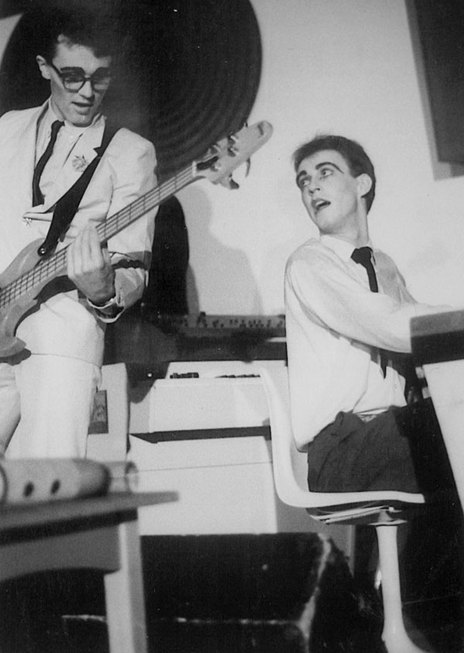
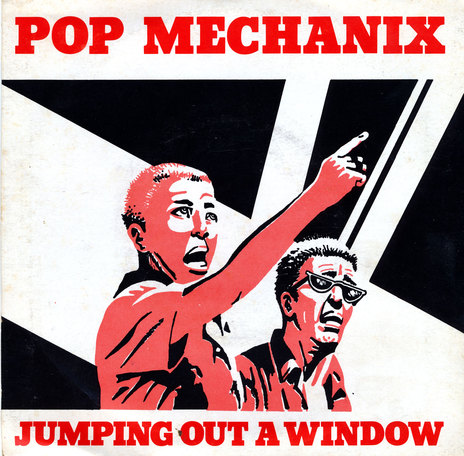
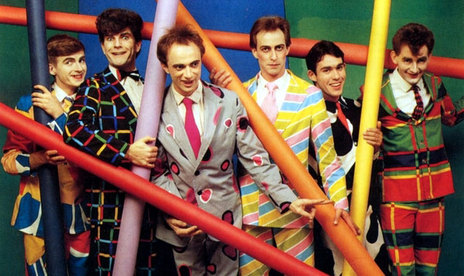
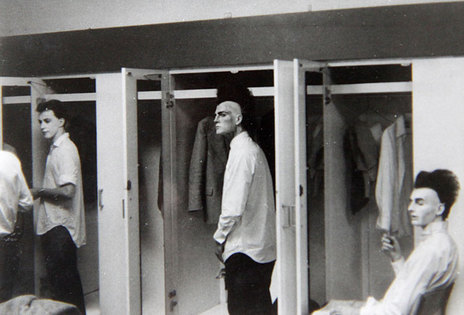
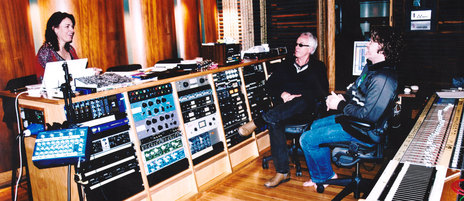
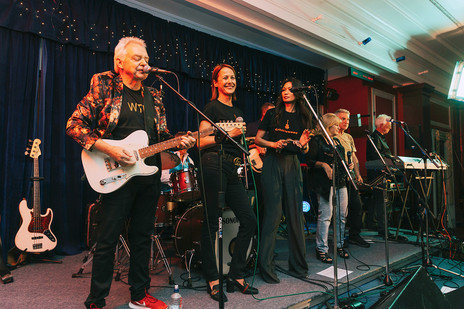
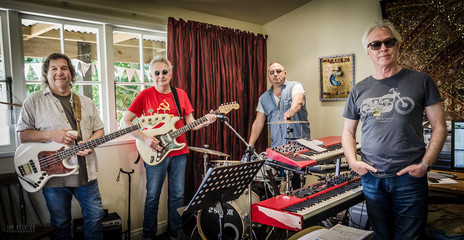
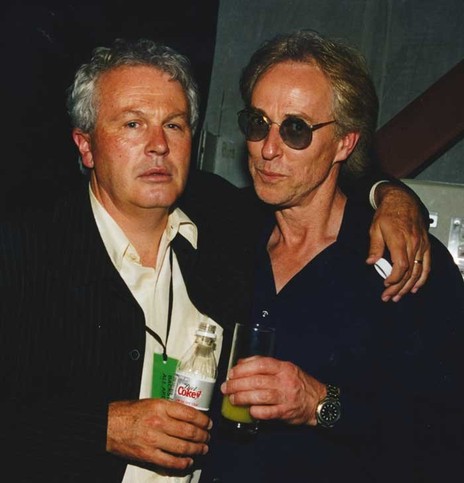
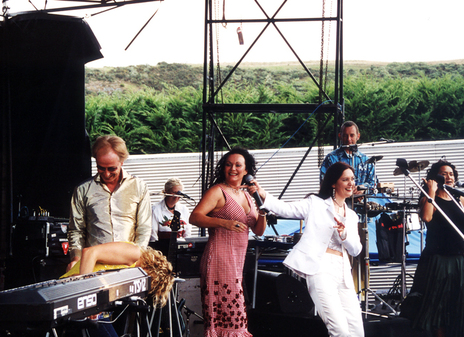
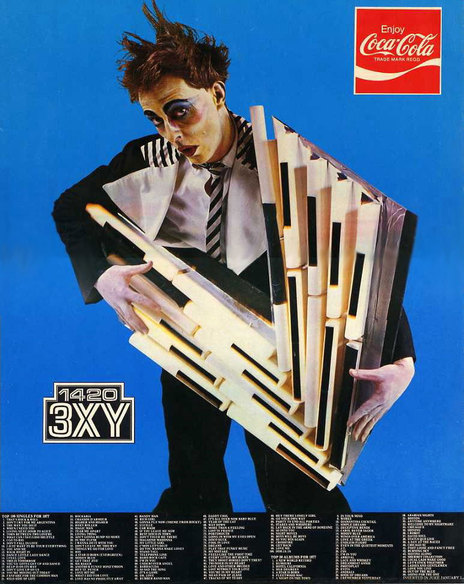
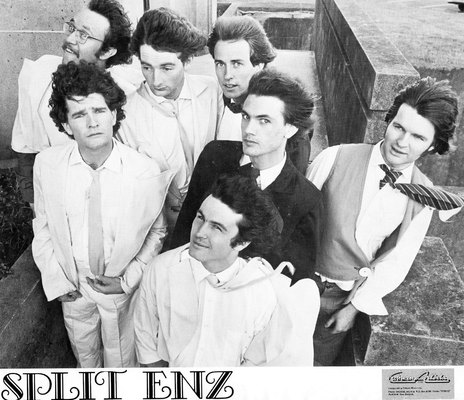
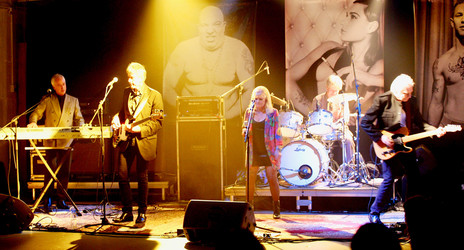
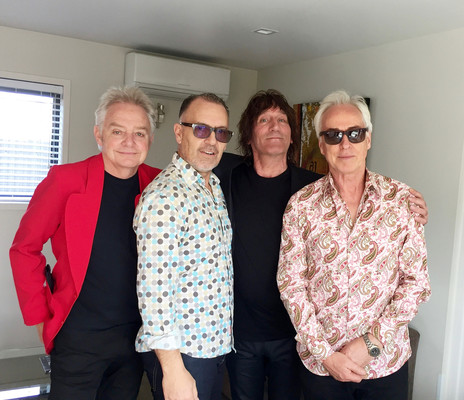
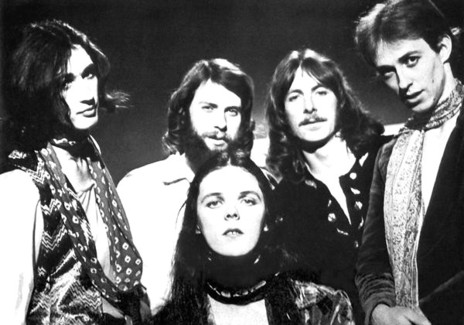
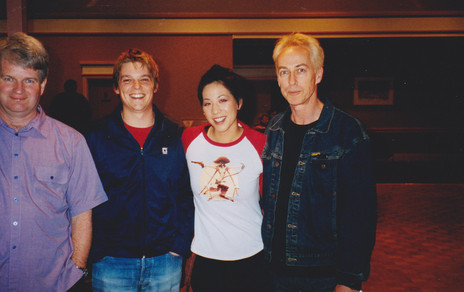

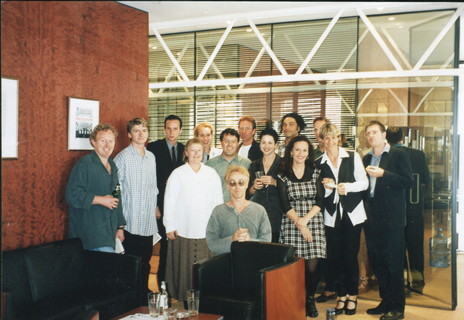
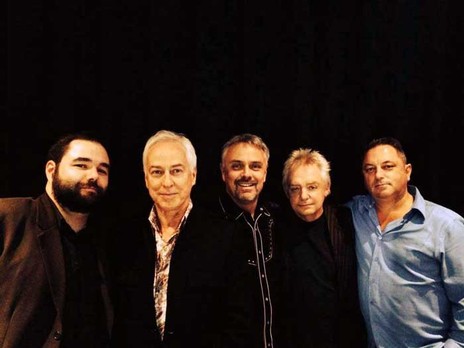
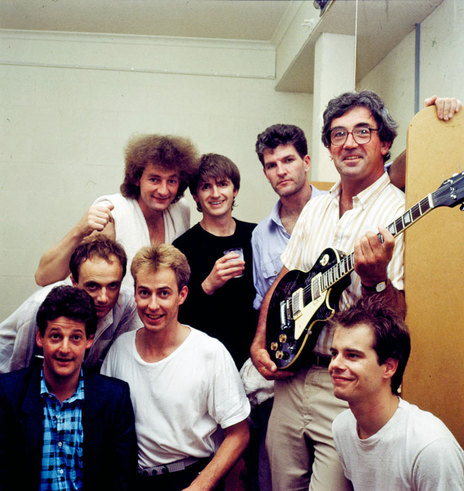
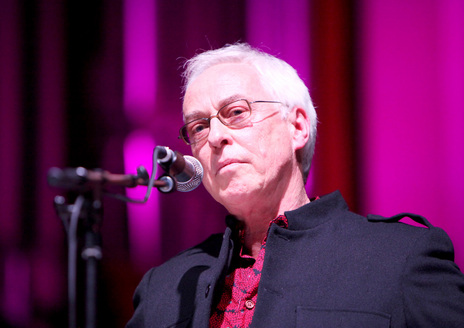
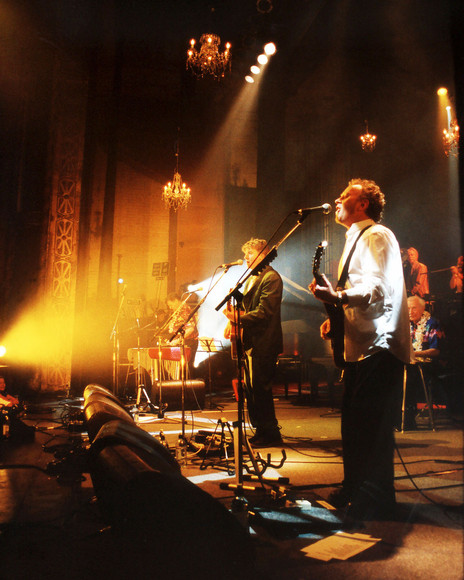
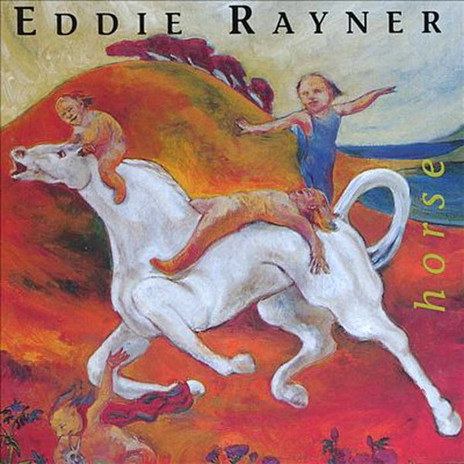
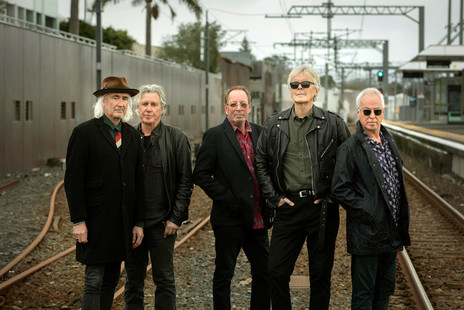
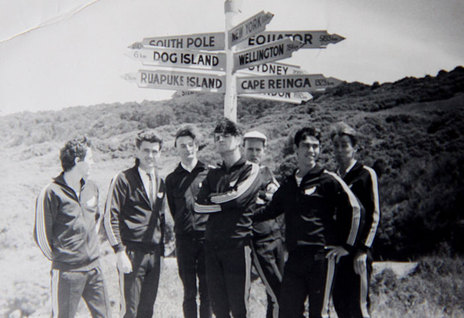
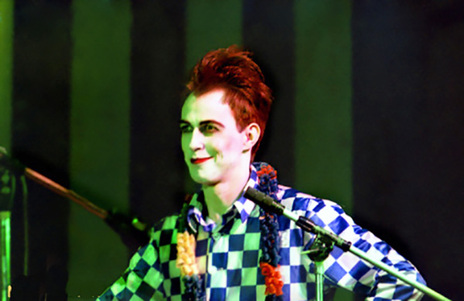
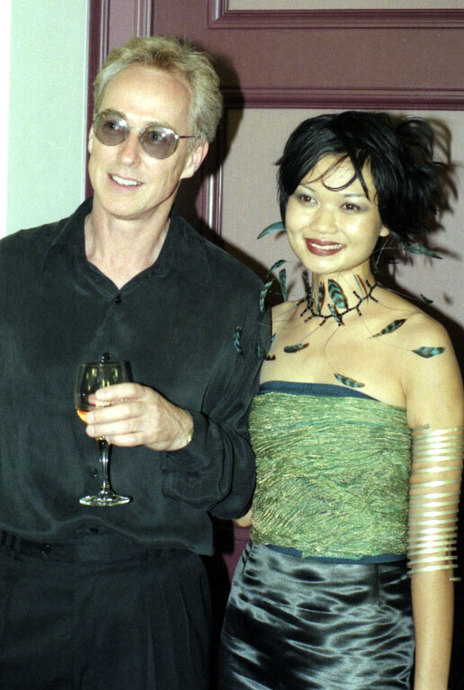
Mushroom Records
Tristar Music
G-Tone Music
EMI
Visit our sister site
NZ On ScreenMade with funding from
NZ On Air

